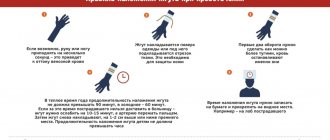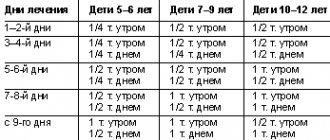Posthemorrhagic anemia
The main factors in the development of posthemorrhagic anemia are the phenomena of vascular insufficiency, hypovolemia with a decrease in the total volume of plasma and circulating formed elements, in particular, red blood cells that transport oxygen. This process is accompanied by a decrease in blood pressure, blood supply to internal organs and tissues, hypoxemia, hypoxia and ischemia, and the development of shock.
The degree of severity of the body's protective and adaptive reactions is determined by the volume, speed and source of bleeding. In the early reflex-vascular phase of compensation for blood loss (the first day), due to the stimulation of the sympathetic-adrenal system, vasoconstriction and increased resistance of peripheral vessels are observed, stabilization of hemodynamics due to the centralization of blood circulation with primary blood supply to the brain and heart, a decrease in the return of blood to the heart and cardiac output. The concentration of red blood cells, Hb and hematocrit are still close to normal (“hidden” anemia).
The second hydremic phase of compensation (2-3 days) is accompanied by autohemodilution - the entry of tissue fluid into the bloodstream and replenishment of plasma volume. Increased secretion of catecholamines and aldosterone by the adrenal glands and vasopressin by the hypothalamus contributes to the stability of the level of electrolytes in the blood plasma. There is a progressive decrease in red blood cells and Hb (total and per unit volume), hematocrit; the value of the color indicator is normal (posthemorrhagic normochromic anemia).
In the third, bone marrow phase of compensation (4-5 days), due to iron deficiency, anemia becomes hypochromic, the formation of erythropoietin by the kidneys increases with activation of the reticuloendothelial system, bone marrow erythropoiesis, and foci of extramedullary hematopoiesis. In the red bone marrow, hyperplasia of the erythroid lineage and an increase in the total number of normocytes are observed, in the peripheral blood there is a significant increase in the number of young forms of erythrocytes (reticulocytes) and leukocytes. Hb, red blood cell and hematocrit levels are decreased. Normalization of the level of red blood cells and Hb in the absence of further blood loss occurs after 2-3 weeks. With massive or prolonged blood loss, posthemorrhagic anemia becomes hyporegenerative in nature, and shock develops when the body's adaptive systems are depleted.
Vitamin K deficiency hemorrhagic syndrome in newborns and children in the first months of life
- Narogan Marina Viktorovna
- Karpova Anna Lvovna
- Stroeva Larisa Emelyanovna
Summary
The article is devoted to hemorrhagic disease of the newborn (HDN). Data are provided on the biological role of vitamin K and its metabolism in newborns. The frequency of development, causes and clinical symptoms of early, classic and late forms of the disease are presented. Based on a review of domestic and foreign publications, the issues of laboratory diagnosis, prevention and treatment of GRBN are considered. Considering the danger of life-threatening bleeding, emphasis was placed on the need to maximize the coverage of newborns with prophylactic administration of vitamin K in accordance with Clinical guidelines for the diagnosis and treatment of hemorrhagic disease of newborns, developed by the Association of Neonatologists (2015). We describe a clinical case of the development of a late form of GRBN in a child who was exclusively breastfed and did not receive vitamin K for prophylaxis after birth.
Key words: hemorrhagic disease of newborns, vitamin K Deficiency hemorrhagic syndrome, newborns, vitamin K
Neonatology: news, opinions, training. 2015. No. 3. P. 74-82.
Hemorrhagic disease of newborns (HDN) (ICD-10 code - P53), or vitamin K-deficiency hemorrhagic syndrome, is a disease manifested by increased bleeding in newborns and children in the first months of life due to insufficiency of blood coagulation factors (II, VII, IX, X) , whose activity depends on vitamin K.
The term hemorrhagic disease of the newborn was coined in 1894 (Townsend, 1894) to describe bleeding in newborns not associated with traumatic exposure or hemophilia. Vitamin K deficiency was later shown to be the cause of many of these bleedings, leading to the more accurate term “vitamin K deficiency bleeding” (VKDB) [1].
Biological role of vitamin K and its metabolism in newborns
The biological role of vitamin K is to activate the gamma-carboxylation of glutamic acid residues in prothrombin (factor II), proconvertin (factor VII), antihemophilic globulin B (factor IX) and Stewart-Prower factor (factor X), as well as in plasma antiproteases C and S, playing an important role in the anticoagulation system.
With a lack of vitamin K in the liver, the synthesis of inactive decarboxylated forms of K-dependent factors occurs, which are unable to bind calcium ions and fully participate in blood clotting (PIVKA - protein induced by vitamin K absence or antagonism) [2-4]. Studies usually use the determination of PIVKA-II levels, the decarboxylated form of prothrombin.
In 1929, the Danish biochemist H. Dam isolated a fat-soluble vitamin, which in 1935 was named vitamin K, but to date the metabolic pathways of vitamin K have not been fully studied.
The main source of supply for the body is vitamin K of plant origin, which is called vitamin K1, or phylloquinone. It comes with food - green vegetables, vegetable oils, dairy products. Another form of vitamin K, vitamin K2, or menaquinone, is of bacterial origin. Vitamin K2 is mainly synthesized by intestinal microflora. The role of vitamin K2 has been studied very little. The largest amount of it is located inside bacterial membranes and may be poorly absorbed. Vitamin K2 is not considered to be of much importance to the body. It is known that vitamin K is deposited in the form of menaquinone-4 (MK-4) in the pancreas, salivary glands, and brain. Currently, research is being conducted to study the metabolic pathways of various forms of vitamin K. One of the ways to convert vitamins K1 and K2 into a deposited form is their metabolization in the intestine into an intermediate substance - menadione (vitamin K3). Then, the deposited form of menaquinone-4 is synthesized from menadione circulating in the blood in extrahepatic tissues [4-7].
All newborns have a relative deficiency of vitamin K. The transfer of vitamin K1 across the placenta is extremely limited. The maternal-fetal gradient for vitamin K1 is 30:1, as a result of which the concentration of vitamin K in the blood of the fetus and its reserves at the time of birth are extremely low. Levels of vitamin K1 in umbilical cord blood range from very low (<2 mg/ml) to undetectable. Vitamin K2 is practically not detected in the liver of newborns or occurs in extremely low quantities. This form of the vitamin begins to accumulate gradually during the first months of life. Perhaps, in breastfed children, vitamin K2 accumulates more slowly, since their predominant intestinal microflora ( Bifidumbacterium
,
Lactobacillus
) does not synthesize vitamin K2.
Bacteria that produce vitamin K2 are Bacteroides fragilis
,
E. coli
, are more common in children receiving artificial milk formulas [1, 4, 8].
At the same time, in 10-52% of newborns, an increased level of PIVKA-II is detected in the umbilical cord blood, indicating a deficiency of vitamin K, and by the 3-5th day of life, a high level of PIVKA-II is found in 50-60% of children who are on breastfeeding and who have not received prophylactic administration of vitamin K [4, 9, 10]. Thus, for newborns, the only source of vitamin K is its exogenous supply: with human milk, artificial nutritional formula, or in the form of a drug.
It is known that HRBN develops more often in breastfed children, since the content of vitamin K1 in breast milk is much lower than in artificial milk formulas, usually amounting to <10 μg/l [4]. Whereas artificial milk formulas for full-term babies contain about 50 mcg/l of vitamin K, and formulas for premature babies contain up to 60-100 mcg/l.
Classification of hemorrhagic disease of newborns
There are 3 forms of GRBN depending on the age of manifestation of symptoms: early
,
classical and late
.
The development of bleeding in all forms of the disease is based on vitamin K deficiency. However, the risk factors and causes of the development of symptoms in different forms differ.
Early form of GRBN
Not studied enough. Rarely seen. Manifests during the first 24 hours of a child’s life.
As a rule, the cause of the development of the early form of GRBN is the mother's intake during pregnancy of drugs that interfere with the metabolism of vitamin K, such as indirect anticoagulants (warfarin, phenindione), anticonvulsants (barbiturates, carbamazepine, phenytoin), anti-tuberculosis drugs (isoniazid, rifampicin).
The incidence of this form in children whose mothers received these drugs during pregnancy without vitamin K supplements reaches 6-12% [1, 11]. In general, the frequency of the early form of GRBN, according to 6-year follow-up in Switzerland from 2005 to 2011, was 0.22 per 100 thousand [12].
In the early form, bleeding of any location, including the brain, may occur. Bleeding associated with birth injuries is typical [9, 13]. It is believed that this form of the disease cannot usually be prevented by prophylactic administration of vitamin K after childbirth [1, 14].
Classic form of GRBN
It manifests itself as bleeding on the 2-7th day of life.
In addition to the above reasons that cause vitamin K deficiency in the fetus and newborn, there are 2 more important reasons for the development of this form: 1) lack of prophylactic use of vitamin K immediately after birth and 2) insufficient milk supply.
Gastrointestinal bleeding, skin hemorrhages, bleeding from injection sites/infestations, from the umbilical wound and from the nose are typical. Intracranial hemorrhages are less common [2, 9, 15].
The estimated incidence of the classic form of GRBN without prophylactic use of vitamin K is 0.25-1.5%. Prophylactic administration of vitamin K immediately after the birth of a child can practically eliminate this form of GRBN [1, 12].
Late form of GRBN
It is diagnosed in cases of bleeding symptoms developing in the period from the 8th day to the 6th month of life, although, as a rule, the manifestation occurs at the age of 2-12 weeks [1, 2, 9, 14, 16].
There are 3 main groups of children who are at risk of developing a late form of GRBN.
The first group consists of children with vitamin K deficiency: those who are exclusively breastfed and who have not received vitamin K prophylaxis after birth [12, 14, 17].
Group 2 includes children with impaired absorption of vitamin K in the gastrointestinal tract. This condition is observed in cholestatic diseases and intestinal diseases accompanied by malabsorption (diarrhea for more than 1 week, cystic fibrosis, short bowel syndrome, celiac disease) [1, 18, 19].
Group 3 includes children receiving long-term parenteral nutrition with an inadequate supply of vitamin K.
A feature of the clinical picture of the late form of GRBN is the development of intracranial hemorrhages with a frequency of 30 to 75%, which in 30-50% of cases lead to disability or death [1, 11, 20-22].
Some children experience small “warning” hemorrhages some time before a cerebral hemorrhage (from a day to a week) [16, 17, 23, 24].
Without the prophylactic use of vitamin K immediately after the birth of a child, the incidence of late form of GRBN is in the range of 5-20 per 100 thousand newborns. Intramuscular prophylactic administration of vitamin K can significantly reduce the incidence of the late form, practically eliminating the possibility of its development in children who do not have cholestasis and malabsorption syndrome [1, 12, 25, 26]. In Switzerland, a 6-year follow-up of the development of GRBN from 2005 to 2011. in conditions of three times oral prophylactic intake of a water-soluble form of the vitamin
K (2 mg on the 1st, 4th day and 4 weeks) showed that the frequency of the late form is 0.87 per 100 thousand, while all cases of late bleeding appeared in children who were breastfed and had cholestatic diseases. The development of the classical form has not been registered [12].
Laboratory signs of GRBN
Laboratory signs of GRBN are primarily changes in prothrombin tests: prolongation of prothrombin time (PT), decrease in prothrombin index (PTI), increase in international normalized ratio (INR). A significant change in prothrombin tests is characteristic - 4 times or more. In more severe cases, a prolongation of activated partial thromboplastin time (aPTT) occurs [11, 23, 27, 28].
The levels of fibrinogen, platelets, and thrombin time, as a rule, do not change. However, with massive bleeding and critical conditions, these indicators can become pathological, which is more often observed in the late form of GRBN.
The diagnosis is confirmed by normalization of prothrombin tests and cessation of bleeding after administration of vitamin K [15, 17, 20, 27]. According to Russian authors, complex treatment of the late form of GRBN (administration of menadione and fresh frozen plasma) leads to normalization of prothrombin tests within 6-8 to 18-24 hours [17, 24].
When assessing a coagulogram, it is necessary to take into account that the normative values of hemostasis indicators in newborns and children in the first months of life differ from the reference values in adults and are subject to significant changes immediately after birth. And premature babies have their own characteristics of hemostasis depending on gestational age, characterized by a significant range of values. Newborns and premature infants are characterized by a hypocoagulation orientation of the plasma-coagulation link of hemostasis against the background of increased intravascular coagulation and fibrinolysis activity [increased levels of fibrin degradation products (FDP) and D-dimers] [28-34].
The absolute values of hemostasis parameters depend on the reagent and analyzer, therefore, it is recommended that each laboratory determine its own reference values for newborns and premature infants in accordance with the methodology used [34, 35].
The determination of vitamin K is of no diagnostic value due to its low concentration in newborns [11].
The PIVKA-II level can help in diagnosing hidden vitamin K deficiency, however, it is not considered one of the main diagnostic markers of HDN in practice and is mainly used in scientific works [4, 9].
Treatment of GRBN
It is based on the principles of stopping bleeding and eliminating vitamin K deficiency.
Any child suspected of having GRBN should be given vitamin K immediately, without waiting for laboratory confirmation. In the Russian Federation, the vitamin K preparation is menadione sodium bisulfite (Vicasol), a water-soluble synthetic analogue of vitamin K3. It must be taken into account that its effect begins after 8-24 hours.
In case of ongoing and life-threatening bleeding, the administration of fresh frozen plasma is indicated [2, 9, 36]. Instead of plasma, it is possible to use a concentrated preparation of the prothrombin complex [2, 9, 37]. Its use should be monitored due to the risk of thromboembolic complications [38].
Prevention of GRBN
Prevention of GRBN is a priority for neonatal and pediatric services.
To increase the concentration of vitamin K in the body of a pregnant woman and in breast milk, a woman is recommended to diet using foods rich in vitamin K1, as well as take multivitamin complexes [4, 13, 15].
Pregnant women who take drugs during pregnancy that interfere with the metabolism of vitamin K are recommended to take additional vitamin K: in the third trimester at a dose of 5 mg/day or 2 weeks before birth at a dose of 20 mg/day [1, 14]. However, all these measures are not considered sufficient for the complete prevention of all forms of GRBN.
Taking into account the physiology of the coagulation system and metabolism of vitamin K in newborns, in developed countries, prophylactic administration of a vitamin K drug to all newborns has been accepted, and since the 1960s. Only vitamin K1 preparations are used. Studies conducted up to this time have shown that the drug menadione has an oxidizing effect on fetal hemoglobin, leading to hemolysis, the formation of methemoglobin and Heinz bodies in erythrocytes, which is associated with impaired glutathione metabolism against the background of insufficient antioxidant protection in newborns and, especially, premature infants. The toxic effect of menadione was detected when using high doses (more than 10 mg) [4, 15, 39, 40].
The prophylactic use of vitamin K1 preparations has shown its effectiveness in numerous studies. It is believed that a single parenteral administration of vitamin K1 after the birth of a child is sufficient to prevent the classic and late forms of GRBN in children who do not have symptoms of cholestasis and malabsorption. In some countries, enteral supplementation of vitamin K1 is used for the same purpose, but in these cases it is necessary to take several doses of vitamin K1 orally according to certain regimens. If cholestasis or malabsorption syndrome is present, the child will require additional vitamin K administration [1, 11, 16, 20, 27, 41, 42].
Considering the absence of a vitamin K1 preparation currently registered in the Russian Federation, for the prevention of vitamin K-deficiency hemorrhagic syndrome in our country, intramuscular injection of a 1% solution of menadione sodium bisulfite is used, which is administered in the first hours after birth. During surgical interventions in newborns with possible severe parenchymal bleeding, as well as in children with cholestasis or malabsorption syndrome, additional administration of vitamin K is necessary (see figure).
The effectiveness of the use of menadione can be considered proven for the prevention of the classical form of GRBN in full-term infants, since many studies conducted have obtained identical results: intramuscular administration of menadione (including at a dose of 1 mg) led to a significant increase in PTI, a decrease in APTT, PT, and PIVKA-II, a reduction in the frequency of bleeding, while no toxic effects were registered [27, 29, 43, 44].
The high frequency of intracranial hemorrhages in the late form of hemorrhagic disease in children who are exclusively breastfed makes the prevention of this form especially relevant. Numerous foreign studies have shown the effectiveness of a single parenteral administration of vitamin K1 immediately after the birth of a child for the prevention of this form of the disease. There are practically no studies of the effectiveness of the drug menadione for the prevention of late forms of GRBN in modern literature, which is to some extent explained by what happened in the 1960s. in many countries, replacing it with a vitamin K1 preparation. However, in the domestic literature there are a few publications indicating that the cases of late form of GRBN developed in exclusively breastfed children who did not receive prophylactic administration of the drug menadione in the maternity hospital.
One of the publications presents an analysis of 9 cases of late hemorrhagic disease accompanied by intracranial hemorrhages. The disease developed in children aged from 1 month to 2 months 20 days, who were breastfed and did not have serious somatic pathology. The disease ended unfavorably in 7 (78%) patients: death occurred in 6 children, disability in 1. The authors try to draw attention to the fact that none of the patients received prophylactic administration of vitamin K in the maternity hospital [17].
Another review presents an analysis of 34 cases of late GRBN with intracranial hemorrhage.
The disease manifested itself from the 3rd to the 8th week. All children were breastfed and did not receive vitamin K prophylaxis [24].
Clinical case of late form of GRBN
Boy D
. born from the 3rd pregnancy (1st - frozen, 2nd - full-term birth, the child is healthy), which proceeded without any peculiarities, from 2 births at 39 weeks with a body weight of 2820 g, height 50 cm. Assessment Apgar score was 9/10 points. Attached to the breast in the delivery room. Vaccinated with BCG and hepatitis B vaccine in the maternity hospital. Vitamin K was not administered prophylactically. The patient was discharged home from the maternity hospital in satisfactory condition with a bilirubin level of 200 µmol/l. Was breastfed. In the first month I gained 500 g in weight.
At 2-3 weeks of life, slight umbilical bleeding was noted; he did not receive treatment. At the age of 27 days, there was a slight sanguineous discharge from the nose and a hemorrhagic crust in the nose. The next day, at the age of 28 days, the mother noticed a small hematoma on the child’s back under the shoulder blade, about 1.5 cm in size. In the morning on the 29th day of life, a single vomiting was noted, the child did not suck well, was restless, and drew his legs in. The doctor on duty at the clinic diagnosed intestinal colic.
By evening, the child became lethargic, pale, and was vomiting profusely. On the morning of the 30th day of life, due to progressive deterioration of his condition, he was hospitalized with a diagnosis of prolonged jaundice, intestinal colic, hydrocephalic syndrome.
Upon admission to the hospital. The condition is extremely serious. Body temperature 38 oC. The child practically did not react to the examination. Decortication posture, pronounced hyperesthesia, irritated monotonous cry, bulging of a large fontanelle, anisocoria on the right, the skin was pale icteric in color, a hematoma with a diameter of 1.8-2.0 cm on the back, the subcutaneous fat layer was thinned, and tachycardia was observed. In other organs there are no visible abnormalities.
Survey data
Clinical blood test: Hb 99 g/l, erythrocytes 2.71×1012/l, platelets 165×109/l. In the biochemical blood test: total protein 57 g/l, total bilirubin 227 µmol/l, direct bilirubin 16.1 µmol/l, glucose 5.1 mmol/l, ALT 12 U/l, AST 13.4 U/l.
Coagulogram.
Conclusion: hypocoagulation associated with a deficiency of K-dependent blood coagulation factors (see table).
Based on the anamnesis, clinical picture and additional examination, a diagnosis of “vitamin K deficiency bleeding,” late form, was established.
Stage III intraventricular hemorrhage.” Posthemorrhagic anemia.
For the main diagnosis, treatment was carried out: vikasol 1 mg/kg once a day for 3 days, dicynon, double transfusion of fresh frozen plasma, transfusion of red blood cells.
During treatment, 1 day after admission, coagulogram parameters returned to normal (see table).
After 1 month, due to the development of occlusive tetraventricular hydrocephalus, the child was transferred to a neurosurgical hospital, where he underwent ventriculoperitoneal shunting.
Conclusion
GRBN is a serious disease that can be fatal or disabling, especially if it develops late. It must be taken into account that the formation of severe intracranial hemorrhages in the late form of GRBN can be prevented by carrying out timely prevention.
The accumulated experience convinces of the need for prophylactic administration of vitamin K preparations to all newborns in the first hours after birth and maintaining vigilance against the late form of GRBN.
In this regard, in 2015, the Association of Neonatologists developed clinical guidelines for the diagnosis and treatment of GRBN. A regimen for the prevention of GRBN has also been proposed [36]. Unfortunately, in the Russian Federation, 100% routine prevention of HDN is difficult to implement, since hemolytic disease in a newborn is an official contraindication for the administration of the only vitamin K drug registered in our country - menadione; its appointment in this group of children is possible only if there are serious arguments (see figure).
Prevention of the late form of GRBN should include the administration of vitamin K in the maternity hospital and maintaining vigilance against this disease in children in the first six months of life from high-risk groups: those who are breastfed, those with cholestasis syndrome and malabsorption syndrome. In this regard, the appearance of hemorrhages in children in the first months of life requires immediate differential diagnosis and exclusion of vitamin K-deficient bleeding.
Such warning hemorrhages include:
✧ nosebleeds;
✧ bleeding from the umbilical wound;
✧ petechiae and ecchymoses on the skin or mucous membranes;
✧ intermuscular hematomas or bleeding from sites of invasive interventions (injections, vaccinations, blood sampling sites, circumcision, operations).
If the development of GRBN is suspected, immediate administration of the drug menadione is indicated to avoid the development of life-threatening bleeding.
After registration of a vitamin K1 preparation in Russia, clinical recommendations for the prevention and treatment of vitamin K-deficiency bleeding in children will be revised and the use of vitamin K1 preparations will be recommended.
LITERATURE
1. NHMRC (National Health and Medical Research Council) (2010). Joint statement and recommendations on Vitamin K administration to newborn infants to prevent vitamin K deficiency bleeding in infants - October 2010 (the Joint Statement). Commonwealth of Australia.www.ag.gov.au/cca. ISBN Online: 1864965053.
2. Neonatology. National leadership. Brief edition / ed. acad. RAMS N.N. Volodina. M.: GEOTAR-Media, 2013. 896 p.
3. Joshi A., Jaiswal JP Deep vein thrombosis in protein S deficiency // J. Nepal. Med. Assoc. 2010. Vol. 49. P. 56-58.
4. Greer FR Controversies in neonatal nutrition: macronutrients and micronutrients. In: Gastroenterology and nutrition: neonatology question and controversies. 2nd ed. by Neu J. Philadelphia: Elsevier saunders, 2012. P. 129-155.
5. Card DJ, Gorska R. et al. Vitamin K metabolism: Current knowledge and future research // Mol. Nutr. Food Res. 2014. Vol. 58. P. 1590-1600.
6. Thijssen KHW, Vervoort LMT et al. Menadione is a metabolite of oral vitamin // Br. J. Nutr. 2006. Vol. 95. P. 260-266.
7. Sharer MJ, Newman P. Recent trends in the metabolism and cell biology of vitamin K with special reference to vitamin K cycling and MK-4 biosynthesis // J. Lipid Res. 2014. Vol. 55, N 3. P. 345-362.
8. Thureen PJ, Hay WW Neonatal Nutrition and Metabolism. 2nd Ed. Jr. Cambridge University Press. 2006.
9. Gomella TL Neonatology: Management, Procedures, On-Call Problems, Diseases, and Drugs. McGraw-Hill. 2013.
10. von Kries R., Kreppel S., Becker A., Tangermann R., Gobel U. Acarboxyprothrombin concentration (corrected) after oral prophylactic vitamin K // Arch. Dis. Child. 1987. Vol. 62. P. 938-940.
11. Nimavat DJ Hemorrhagic Disease of Newborn. Updated: Sep 26, 2014. https://emedicine.medscape.com/article/974489-overview.
12. Laubscher B., Banziger O., Schubiger G., the Swiss Paediatric Surveillance Unit (SPSU). Prevention of vitamin K deficiency bleeding with three oral mixed micellar phylloquinone doses: results of a 6-year (2005-2011) surveillance in Switzerland // Eur. J. Pediatr. 2013. Vol. 172. P. 357-360.
13. Shearer MJ Vitamin K deficiency bleeding (VKDB) in early infancy // Blood. Rev. 2009. Vol. 23. P. 49-59.
14. Burke CW Vitamin K Deficiency Bleeding // J. Pediatr Health Care. 2013. Vol. 27, N 3. P. 215-221.
15. Shabalov N.P. Neonatology. 5th ed., rev. and additional, in 2 volumes. M.: MEDpress-inform, 2009. 1504 p. (in Russian)
16. Schulte R., Jordan LC, Morad A., Naftel RP, Wellons JC, Sidonio R. Rise in late onset vitamin K deficiency bleeding in young infants because of omission or refusal of prophylaxis at Birth. Pediatric Neurology. 2014. Vol. 50. P. 564-568.
17. Lobanov A.I., Lobanova O.G. Hemorrhagic disease of newborns with late onset. Issues of modern pediatrics. 2011. No. 1. P. 167-171.
18. Feldman AG, Sokol RJ Neonatal cholestasis // Neoreviews. 2013. Vol. 14, N 2. e63.
19. van Hasselt PM, de Koning T.J., KvistN. et al. Prevention of Vitamin K Deficiency Bleeding in Breastfed Infants: Lessons From the Dutch and Danish Biliary Atresia Registries. Pediatrics. 2008. Vol. 121, N 4. e857-e863.
20. Notes from the field: late vitamin K deficiency bleeding in infants whose parents declined vitamin K prophylaxis // Tennessee. MMWR Morb Mortal Wkly Rep. 2013. Vol. 15, N 62 (45). P. 901-902.
21. Volpe JJ Neurology of the Newborn. 5th ed. Philadelphia: Elsevier, 2008. 1094 p.
22. Volpe JJ Intracranial Hemorrhage in Early Infancyd Renewed Importance of Vitamin K Deficiency // Pediatric Neurology. 2014. Vol. 50. P. 545-6.
23. Ursulenko E.V., Martynovich N.N., Tolmacheva O.P., Ovanesyan S.V. A case of late hemorrhagic disease in a 6-week-old child, complicated by the development of acute cerebrovascular accident and hemothorax // Siberian Medical Journal. 2012. No. 2. P. 114-118.
24. Lyapin A.P., Kasatkina T.P., Rubin A.N. and others. Intracranial hemorrhages as a manifestation of late hemorrhagic disease of newborns // Pediatrics, 2013. No. 2. P. 38-42.
25. Cornelissen M., Von Kries R., Schubiger G., Loughnan PM. Prevention of vitamin K deficiency bleeding: efficacy of different multiple oral dose schedules of vitamin K // Eur. J. Pediatr. 1997. Vol. 156, N 2. P. 126-130.
26. Von Kries R. Oral versus intramuscular phytomenadione: Safety and efficacy compared // Drug Safety. 1999. Vol. 21, N 1. P. 1-6.
27. Wariyar U., Hilton S., Pagan J., Tin W., Hey E. Six years' experience of prophylactic oral vitamin K // Arch. Dis. Child Fetal Neonatal. 2000. Vol. 82, N 1. F64-F68.
28. Puckett RM, Offringa M. Prophylactic vitamin K for vitamin K deficiency bleeding in neonates // Cochrane Database of Systematic Reviews. 2000. Is. 4, N CD002776.
29. Chuprova A.V. The system of neonatal homeostasis in normal and pathological conditions (scientific review) // Bulletin. SO RAMS. 2005. No. 4 (118). pp. 13-19.
30. Shabalov N.P., Ivanov D.O. Shabalova N.N. Hemostasis in the dynamics of the first week of life as a reflection of the mechanisms of adaptation to extrauterine life of a newborn // Pediatrics. 2000. N 3. P. 84-91.
31. Andrew M., Paes B., Milner R., et al. Development of the human coagulation system in the full-term infant // Blood. 1987. Vol. 70. P. 165-172.
32. Andrew M., Paes B., Milner R. et al. Development of the human coagulation system in the healthy premature infant // Blood. 1988. Vol. 72. P. 1651-1657.
33. Mitsiakos G., Papaioannou G. et al. Haemostatic profile of full-term, healthy, small for gestational age neonates // Thrombosis Research. 2009. Vol. 124. P. 288-291.
34. Motta M., Russo FG Developmental haemostasis in moderate and late preterm infants // Ital. J. Pediatr. 2014. 40 (Suppl 2): A38.
35. Dorofeeva E.I., Demikhov V.G. and others. Features of hemostasis in newborns // Thrombosis, hemostasis and rheology. 2013. No. 1 (53). pp. 44-47.
36. Monagle P., Massicotte P. Developmental haemostasis: Secondary haemostasis // Seminars in Fetal & Neonatal Medicine. 2011. Vol. 16. P. 294-300.
37. Degtyarev D.N., Karpova A.L., Mebelova I.I., Narogan M.V. and others. Draft clinical recommendations for the diagnosis and treatment of hemorrhagic disease of newborns // Neonatology, 2015. No. 2. P. 75-86.
38. Krastaleva I.M., Shishko G.A. and others. Problems of treatment of hemorrhagic disease in newborns // Medical news. 2014. No. 9 (240). pp. 60-62.
39. Alarcon P., Werner E., Christensen RD Neonatal hematology pathogenesis, diagnosis, and Management of Hematologic Problems 2nd Edition // Cambridge University Press. 2013.
40. Report of Committe on Nutrition: vitamin K compounds and the water-soluble analogues // pediatrics. 1961. Vol. 28. P. 501-507.
41. Shahal Y., Zmora E., Katz M., Mazor D., Meyerstein N. Effect of vitamin K on neonatal erythrocytes // Biol. Neonate. 1992. Vol. 62. N 6. P. 373-8.
42. Ipema HJ Use of oral vitamin K for prevention of late vitamin K deficiency bleeding in neonates when injectable vitamin K is not available // Ann. Pharmacother. 2012. Vol. 46. P. 879-883.
43. Takahashi D., Shirahata A., Itoh S., Takahashi Y. et al. Vitamin K prophylaxis and late vitamin K deficiency bleeding in infants: Fifth nationwide survey in Japan // Pediatric. International. 2011. Vol. 53. P. 897-901.
44. Chawla D., Deorari AK, Saxena R., Paul VK et al. Vitamin K1 versus vitamin K3 for prevention of subclinical vitamin deficiency: a randomized controlled trial // Indian. Pediatr. 2007. Vol. 44, N 11. P. 817-822.
45. Dyggve HV, Dam H., Sondergaard E. Comparison of the action of vitamin K1 with that of synkavit in the newborn // Acta Paediatrica. 1954. Vol. 43. N 1. P. 27-31.










